We might think that ‘selective breeding’ refers to the process that gave us Labradoodles, pugs, and other designer dog breeds. However, selective breeding is a practice that goes back thousands of years.
Ever since dogs first started following humans around, scavenging our food, and sleeping near our fires, we have been selecting our favorites and breeding them.
Nowadays, dogs are bred for looks as much as anything. Historically, we bred them for their intelligence or certain behavioral traits. Traits that make them good snugglers, better bird-dogs, or scarier guard dogs make dogs desirable to us.
Unfortunately, the practice of selective breeding comes with some drawbacks. Congenital diseases and undesirable conditions such as brachycephalic syndrome have developed because of inbreeding or purposefully breeding for a genetic deformity, regardless of the dog’s health.
In this article, we will explore the history of selective breeding, how selective breeding affects dog populations, and answer the question, “why would dog breeders select specific dogs to mate?”
Other articles you would like: Best Animal Breeding Associations and Best Dog Breeds For Hog Hunting
Why Would Dog Breeders Select Specific Dogs to Mate?
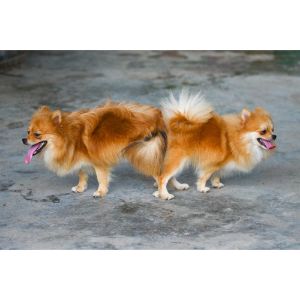
It can be hard to understand why anyone would want to mate two dogs from the same immediate family together. In human mating, this is a huge cultural taboo. Too many dog breeders, it is becoming taboo as well.
Inbreeding is to blame for the development of many of the congenital conditions that plague domestic dogs today. These include hip dysplasia in German shepherds, Addison’s disease in Old English sheepdogs, and ataxia in Jack Russel terriers.
The primary reason these conditions develop is that breeders often choose dogs with similar traits to increase the likelihood that their offspring will inherit them. For example, if two dogs from the same litter display an aptitude for retrieving, a breeder might breed those dogs to increase the likelihood that the puppies will be good retrievers.
This practice is becoming less common as breeders are beginning to understand that hidden genes and alleles in genetically similar dogs can increase the likelihood that the puppies will inherit congenital conditions.
Congenital conditions can develop in mixed-breed dogs. It is not only purebred dogs that can suffer from these diseases. However, introducing new genes into a gene pool decreases the chance that both parents will be a carrier of a particular genetic trait. Therefore, mixed-breed dogs are less likely to have congenital conditions.
It is also worth mentioning that inbreeding and line-breeding do occur naturally. However, in the wild, when these phenomena lead to genetic problems that make the offspring unfit or unable to survive, natural selection quickly eliminates the offspring.
This process of natural selection means that, in the wild, bloodlines that contain congenital conditions are unlikely to develop because unfit members of the species will simply die. Under human care, however, animals that might die in the wild can survive, even thrive, and sometimes breed.
How Did Early Humans Breed Dogs?
The earliest selection of dogs occurred naturally. Dogs were initially attracted to humans because we had warm fires and because we discarded food scraps that they could scavenge. Dogs who chose to remain close to humans benefited from these things and could breed more prolifically. Dogs who did not stay close to us often perished.
Soon, humans began to realize the benefits of our relationship with dogs. Namely, dogs bark when danger comes near, dispose of our food waste for us and assist with hunting. Dogs who were good at these tasks were rewarded with food and shelter, enabling them to breed more successfully.
Dog Breeding as a Hobby
By the time “dog breeding” became a recognized activity in the 19th century, we had already been unconsciously breeding dogs in this way for thousands of years. In the 19th century, people began to keep records of bloodlines and classify dogs into breed groups. Noblemen and women bred dogs for sport, and breeding became a hobby.
How Does Dog Breeding Work Nowadays?
Today, more than 400 dog breeds are recognized worldwide, and we continue to breed dogs for certain desirable traits. Breeding today is informed by genetic research that allows us to carefully select these traits.
Unfortunately, selective breeding has led to many problems for pure-bred dogs in the last hundred years.
Humans have unknowingly bred dogs with genetic markers for disease. We have also knowingly bred dogs from the same bloodlines, and purposefully enhanced certain desirable deformities. This type of selective breeding has led to a proliferation of diseases and genetic problems in many pure breeds.
For example, pugs before selective breeding were less likely to suffer from breathing problems and had much less ‘wrinkly’ faces. It is important to understand, however, that pugs have been pugs since about 400 B.C. Their squashed faces and wrinkles are not a new development.
What Kinds of Traits Are Animal Breeders Looking For?
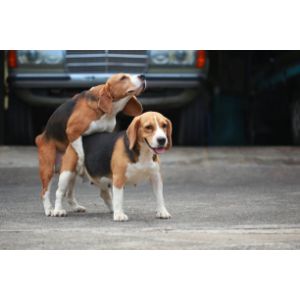
Breeders look for traits that they believe will make a dog desirable. These might be physical or behavioral traits. Breeders who intend to sell their dogs to families as pets will seek out different traits than breeders who intend to use their dogs to herd sheep, hunt birds, or race.
Pets
People who breed family pets look for dogs that are easy to socialize, medium-sized, confident, not prone to aggression or anxiety, and of average intelligence. They also seek out dogs with strong desires to be near humans.
Some dogs, through thousands of years of selective breeding, are more inclined to be with their humans. These include Labradors, Golden retrievers, Pomeranians, German shepherds, and most household pets.
Working Dogs
Other dogs do not make such good companions for the average family. They are bred to do work, so they are genetically predisposed to be more energetic, more intelligent, and require more stimulation to be happy. Some may even require a specific ‘job.’
These dogs include Belgian Malinois, Huskies, Border Collies, Australian Shepherds, Pointers and other bird dogs, and many hounds. Often, these dogs are independent and may not bond with their human in the same way that a family pet may bond. Often, they are highly intelligent or very energetic and do not do well in the average household.
How Has Research in Genetics Changed Pet Breeding?
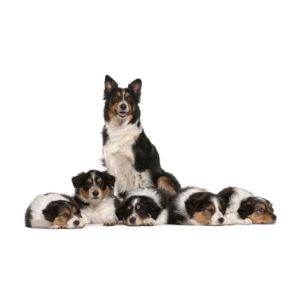
Until quite recently, breeders bred dogs by a method called the ‘candidate gene’ approach. This involved guessing which genes were responsible for particular traits or diseases, and selecting dogs that were thought to carry those genes.
Breeders and scientists developed hypotheses about what happens when a gene is present and tested those hypotheses via breeding.
This process was usually frustrating and resulted in more misses than hits. It was also expensive and time-consuming. Hypotheses could only be tested by physically breeding dogs and then studying the offspring to determine the results.
The Dog Genome Project
The dog genome project, launched in the early 1990s, was an attempt by scientists to discover and isolate the genes that lead to many of the problems faced by purebred dogs. The project involved mapping the genomes of hundreds of thousands of dogs to build a genomic map to allow scientists to navigate the entire dog genome.
In 2003, scientists mapped a partial sequence of the DNA of a standard poodle. This sequence made up about 80 percent of the complete dog genome. Shortly after, geneticists fully sequenced the boxer genome, filling in the gaps and providing the reference sequence for the dog’s complete DNA.
This research has led to the creation of resources that allow us to manipulate dog DNA. The availability of a fully mapped dog genome has also enabled geneticists to understand which genes are responsible for which traits.
It has also allowed scientists to draw genetic distinctions between breeds. Before this work, we drew breed distinctions based purely on visual and assumed behavioral characteristics.
Pet Breeding Genetics
This work is beginning to proliferate into pet breeding as commercial and private dog breeders are beginning to understand the ramifications of genetic markers in their dogs. Responsible breeders may now order genetic tests for their dogs before breeding them to ensure that the parents do not pass down certain diseases to their offspring.
How Can Random Breeding Affect Overall Animal Health?
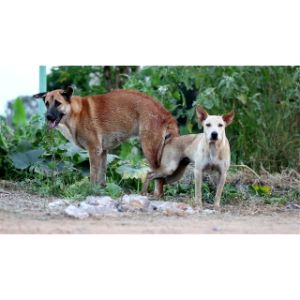
Random breeding, or random mating, is mating with no regard for genetic makeup. It is also called panmixia, and it is a near impossibility. This is true for any species, not just dogs.
Random mating assumes that all partners within a species are potential partners, meaning there are no behavioral, cultural, or genetic restrictions on breeding.
For a truly panmictic population to evolve, there would need to be no age limit on breeding, and no cultural boundaries surrounding inbreeding. Additionally, all members of the population would need equal access to all other members (i.e. have no geographical obstacles.)
Random breeding of dogs would mean breeding, for example, a chihuahua puppy with an adult St. Bernard. This can and does happen, however, it is rare, and it is not what most people mean when they say ‘random breeding.’
Assortative Breeding
What most people mean when they say ‘random breeding’ is ‘assortative breeding.’ Assortative breeding involves breeding similar phenotypes. It is what humans do. Assortative breeding involves selecting dogs with complementary genetic structures rather than simply breeding dogs with ‘the best genes.
Assortative breeding can be beneficial to the health of purebred dogs. Often, dogs who have ‘the best’ genes for a particular trait carry hidden genes that can arise in the offspring and cause problems. Historically, this problem was solved by ‘outcrossing’ (introducing the genes of an entirely different breed).
Assortative breeding means that instead of selecting two dogs with dominant alleles for a gene, you choose one dog with a dominant allele and one with a recessive allele. This process will decrease the risk that the dogs share a hidden gene for an undesirable trait.
Who Was the First Person to Breed a Dog?
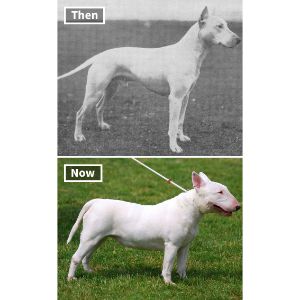
It is impossible to know who the first person was to breed dogs. Some of the earliest evidence for selective breeding has been found in Siberia. The partnership between humans and dogs goes back almost 15,000 years. Throughout this period, humans have, consciously or unconsciously, selected dogs to breed.
Frequently Asked Questions
Do Dog Breeders Force Dogs To Mate?
What Type Of Selection Is Used In Breeding Dogs?
Are Dogs Selective Breeders?
Conclusion For Why Would Dog Breeders Select Specific Dogs to Mate?
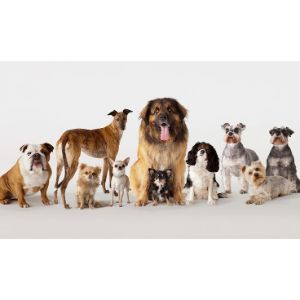
Selective breeding has been happening for tens of thousands of years and has given us the enormous variety of dog breeds we see today. Recently, genetic research has given scientists greater insight into how selective breeding affects dog populations.
When we breed two dogs of a similar genetic structure, the likelihood that the offspring will inherit desirable traits increases. However, the likelihood that undesirable traits (such as congenital diseases) are passed on also increases.
Purebred dogs from bloodlines that have been inbred or bred through line breeding are more likely to carry genes that will pass on congenital conditions to their offspring. The best way to prevent this is to practice assortative breeding or outcrossing to introduce new and complementary genes into the bloodline.
You will also like:
- How To Make Dogs Breed Successfully
- Will a Dog Breed While Bleeding?
- How Old Do Male Dogs Have To Be To Breed?
For more information about Dog Breeding, check out the video below:

